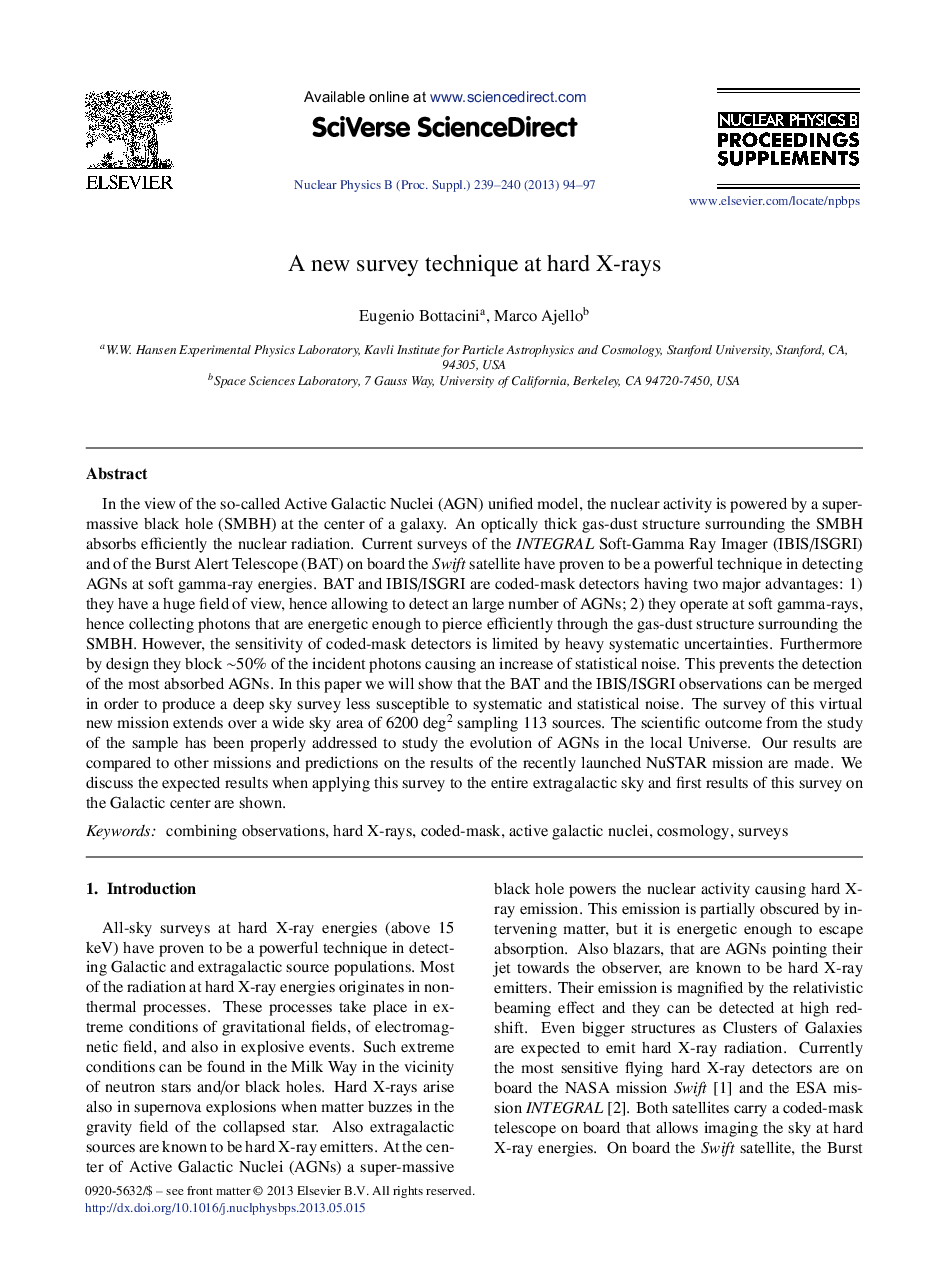| Article ID | Journal | Published Year | Pages | File Type |
|---|---|---|---|---|
| 1847351 | Nuclear Physics B - Proceedings Supplements | 2013 | 4 Pages |
In the view of the so-called Active Galactic Nuclei (AGN) unified model, the nuclear activity is powered by a super-massive black hole (SMBH) at the center of a galaxy. An optically thick gas-dust structure surrounding the SMBH absorbs efficiently the nuclear radiation. Current surveys of the INTEGRAL Soft-Gamma Ray Imager (IBIS/ISGRI) and of the Burst Alert Telescope (BAT) on board the Swift satellite have proven to be a powerful technique in detecting AGNs at soft gamma-ray energies. BAT and IBIS/ISGRI are coded-mask detectors having two major advantages: 1) they have a huge field of view, hence allowing to detect an large number of AGNs; 2) they operate at soft gamma-rays, hence collecting photons that are energetic enough to pierce efficiently through the gas-dust structure surrounding the SMBH. However, the sensitivity of coded-mask detectors is limited by heavy systematic uncertainties. Furthermore by design they block ∼50% of the incident photons causing an increase of statistical noise. This prevents the detection of the most absorbed AGNs. In this paper we will show that the BAT and the IBIS/ISGRI observations can be merged in order to produce a deep sky survey less susceptible to systematic and statistical noise. The survey of this virtual new mission extends over a wide sky area of 6200 deg2 sampling 113 sources. The scientific outcome from the study of the sample has been properly addressed to study the evolution of AGNs in the local Universe. Our results are compared to other missions and predictions on the results of the recently launched NuSTAR mission are made. We discuss the expected results when applying this survey to the entire extragalactic sky and first results of this survey on the Galactic center are shown.
